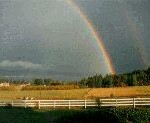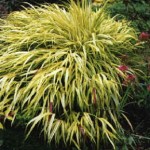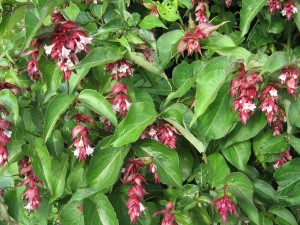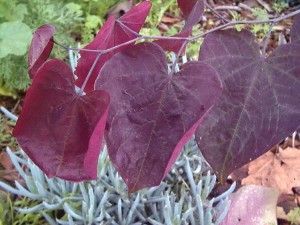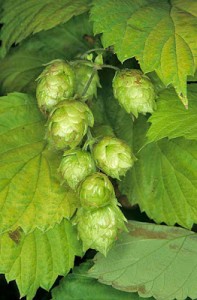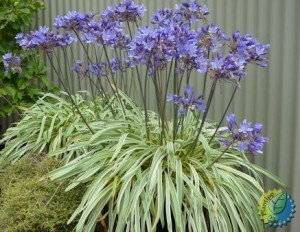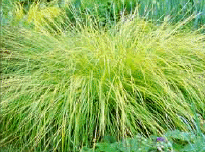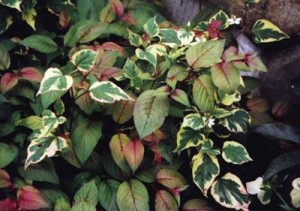An article to encourage gardeners to seek out new plants, new colors; to incorporate the variegated, the gold and the silver into that garden of green.
Trees sway to the win, like violins, bowing to a senescent mood and like some people who do not shine in this color, sometimes-other notes; other shades need to be added. Splashes of pink, yellow and white lighten this garden of green.
Like Hakenochlea macra aureola (Golden Japanese forest grass) they prefer rich soil and part shade to thrive, and their looks, are appreciated amongst those plain blue Hostas or Voodoo blacks of Ophiopogon planiscapus Nigrescens (Black Mondo Grass)
Piccolos to the green, they add to the symphony of the garden. Their notes are appreciated even more fully in the cooler seasons. The gold-pinks of Hakenochlea touch the lively pink of Rehmannia angulata (Perennial foxglove) and the electric silver-lilac of Aster cordifolius ‘Silver Spray.’ These provide a beetle-like intensity that illuminates the grayer gloom of fall descending to winter.
I complimented a ‘piccolo-like’ friend, remarking that in shrubs a piccolo would be a variegated, berried evergreen. I’m a Pyracantha Harlequin? How rude! I scurried through the other possibilities and revisited the flattering wintery purple of Leucothoe ‘Rainbow’ or Leycesteria formosa, a honeysuckle of a plant, rich in claret tones, remarkably underused, with blood red foliage, well complimented by burgundy-purple berries late in the summer. Alas, by that time she had undulated her way out of my life. I told all this to another grower who laughed. At that very moment he was looking out his January window at his own bright and beautiful pyracantha. Its white and green foliage turned a wintry pink, further illuminated by the orange-red berries. It was a feast to the eyes and to the ears, with the songs of the robins and chickadees that fed there.
This is also a placement for Phystostegia virginiana ‘Variegata,’ an obedient plant in name only. Her bouncy pink, white and green may sound gaudy and trashy, but she is sweet and strong. Her foliage sparkles through all seasons, coming to a stunning finale in late September pinks and whites that further compliment her dress. She provides a pink enameling to a tawnier season. Plant her in partial shade of sun, but do provide moisture for this one. Phystostegia grows 3 feet tall and the individual flowers can be hand twisted and stay obedient in every way. These are flowers for children’s hands, like snapdragon cannons to the imagination.
Adults can recapture the fascination children have for texture, touch and golden playfulness. Gold’s like the Lambs ear warmth of Stachys lanata ‘Heron’ or the golden beauty of Veronica ‘Trehanii.’ (A 24-caret Speedwell) are best appreciated under the dappling of overhead limbs. The Midas softness of this Veronica compliments summer waves of ocean blue flowers. A color combination even more beautiful in fall is Carypoteris ‘Worcester Gold’ – a blue October reflection, precious in the surrounding orange-reds of fall. A post summer cooling, it retains in the molten gold surface – hints of summer.
Acanthopanix sieboldiana ‘Variegatus’ — (Five leaf Aralia) a cream of gray to green has foliage well worth seeking, palmate leaves edged and splashed with cream. This variegent does best in sun or in partial shade, where its highlights sparkle. Leaf tones can be used to compliment or contrast. The hop or variegated Kiwi (Actinidia kolomika) can create vibrant crescendos or soothing moods. Some plants, like the Lamiums or Ballotas are light absorbers. They illuminate the dark and give a warmth that holds the structure of the evening garden together.
From our own Southwest and Central America come the glorious structural cellos, the Yuccas. The cultivar Y. “Bright Edge’ is brilliant and attractive. Green and cream, it has a pink tinge to the leaf margin. Y. filimentosa ‘Variegata’ has leaves broadly striped in yellow and cream. Lower growing is Y. flaccida ‘Garland Gold,’ a two footer with mid-green leaves that broaden and arch outward in age. All are great garden or tub plants with bell like, cream or ivory flowers.
A more vigorous form of ‘Stripes’ selected by Ed Carmen of Los Gatos is now on the market to accommodate our more impatient gardeners. Since their introductions, many new Agapanthus hybrids have come on the market. Suncrest Nurseries and Monterey Bay Nursery are wholesale growers of these mood indigos. Strong summer colors missed in this harder climate, although agapanthus make good container plants and over winter nicely when given shelter from frosty lows.
Variegations allow your garden to wander to new adventures. They may not be Monet’s, but why not venture to be Dali-esqe, or use colors or the textures of Gaugan or a van Gogh? In this experimentation, meld the English garden with the guitar-like vibrancy of Spain or Mexico, a mestizo of a garden plan. Like ‘Water for Chocolate’ a breaking loose of fires too long submerged in this squish able Northwest.
Another grower wrote of Weigelia ‘Rubidor, “Intense chartreuse-gold leaves hold their color all summer. Spring flowers are a shocking strawberry red, proving that even Mother Nature occasionally gets bored.” Or perhaps she simply spices up the ‘proper garden ‘ with the colors found in the iridescence’s of beetles and the humor of harlequin bugs. The Variegated Garden is a tumble garden where plants and colors simply mix it up.
In the Northwest we daily reawaken to the green terrain of forest trees, of blue found in lakes and streams that flow to an ocean that drums these shores. The Olympic Mountains greet our eyes every morning with an optimistic hello. They are green, sometimes purple, and when the sun plays her special ways, lipstick hues of violet and wine. In January, they are white with snow, but they are the same mountains beneath and exciting in all their colors. One realizes, plants or mountains can be – beautiful in all the colors nature endows.
Floracordially Yours,
© Herbert Senft

